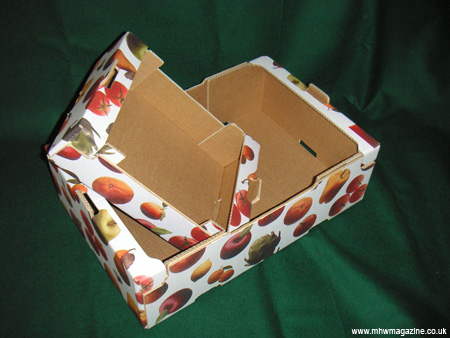
Confederation of Paper Industries (CPI) Corrugated Sector is urging local authorities to do more to encourage businesses to recycle their corrugated packaging to prevent a valuable, reusable material being lost to the industry.
The corrugated industry is proud of its recycling heritage dating back over a 100 years. Every year, over 80% of the material is recycled, equivalent to an area three times the size of Greater London.
Despite being the most recycled packaging material in the country, there is still quite a high proportion of corrugated found in the residual waste stream, particularly from businesses which are responsible for less than 10% of all waste managed by councils.
CPI's Director of Packaging Affairs, Andy Barnetson, said: "An increasing number of councils are benefiting from providing commercial recycling collections, but unlike domestic recycling collections, they are not obliged to do so.
"Some local councils' policies conflict with recycling. It's not uncommon for some authorities to refuse to accept paper and corrugated from an office because they treat it as commercial waste, therefore encouraging, in a minority of cases, small businesses to use other disposal methods rather than recycling.
"Landfilling of corrugated must be viewed as a last resort as such a versatile, easily recycled product should be recovered wherever possible, in order to make the most of the resources which went into its production."
Not only is recycling corrugated beneficial to the environment and to the nation's carbon footprint, it has a commercial value and is essential to the UK Corrugated Packaging Industry. Even though the sector is already surpassing Government and EU targets, recycling corrugated ensures that fibres, which would otherwise be lost, can be reused.
Recycling of corrugated is easiest when it is most convenient. Some councils are including corrugated in their kerbside collections from households. Alternatively, in most towns, there are civic amenity sites and recycling facilities at supermarkets where people can take their recyclable material.
From a domestic perspective, awareness of the benefits of recycling is generally on the increase, but authorities should be encouraging more households to separate corrugated from other recyclables, particularly from glass and plastic. Co-mingled collections are an option if there are suitable sorting techniques in place; otherwise the quality of the material is adversely affected. According to a Judicial Review ruling in 2013, any decision to move away from separate collection should involve a "sophisticated context-driven exercise of judgement".
Commercial collections of corrugated will not only boost the recycling rate, but help improve the quantity and quality of reusable material for the industry. It really is just a matter of securing the stream so that local authorities can see its value.
Cost might be a factor deterring local authorities from focusing on free commercial recycling collections of corrugated, as a business may baulk at having to pay extra for taking away segregated corrugated, in addition to its residual waste. It's a tricky decision for councils in times of austerity, but making corrugated collections would intensify a reduction in general residual waste collection and councils could recoup the costs from the value of the materials.
Corrugated's recycling rate in the UK is well above the EU target for members of 70% by 2015. However, CPI is working with individual companies and organisations like WRAP to highlight where products can be improved to avoid other disposal routes.
Andy Barnetson concluded: "There are challenges ahead as recycling is levelling off and the amount of household waste, including a significant proportion of recyclable materials, sent to power-generating incinerators is increasing, but the Corrugated Packaging Industry's resolve to continue to reduce its impact on the planet is unwavering."